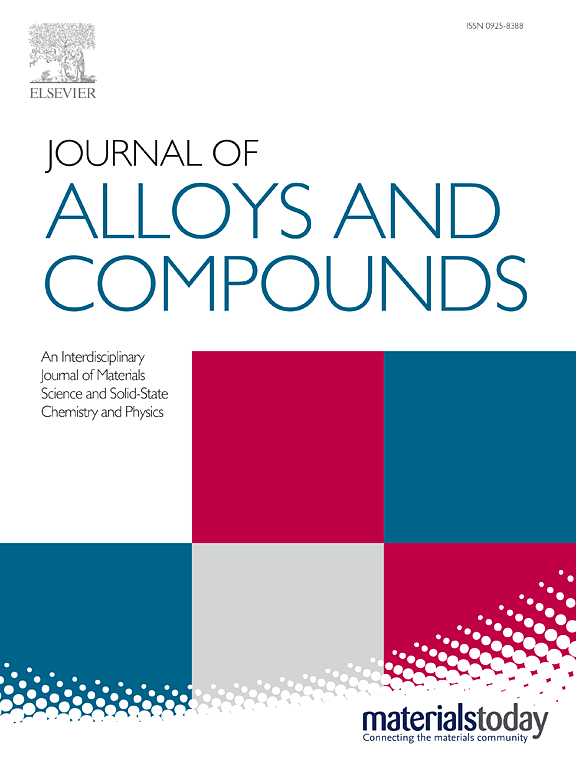氢与金属间化合物颗粒相互作用对2050铝合金应力腐蚀开裂行为的影响
IF 5.8
2区 材料科学
Q2 CHEMISTRY, PHYSICAL
引用次数: 0
摘要
研究了氢与金属间化合物颗粒(IMPs)相互作用对2050铝合金应力腐蚀开裂行为的影响。当充氢电位从-500 mVOCP降低到-1000 mVOCP时,合金的SCC敏感性指数从15.2%提高到54.5%。氢环境下合金自裂裂纹的萌生和扩展过程分别主要受HFAD机制和HEDE机制控制。在SCC的裂纹萌生过程中,氢优先聚集在Cu含量低的AlCuMnFe imp周围,形成伏特电位低于基体的氢影响区,加速了点蚀萌生和裂纹萌生。在SCC的裂纹扩展过程中,氢在晶界处的聚集降低了原子结合能,导致裂纹沿晶界快速扩展。本文章由计算机程序翻译,如有差异,请以英文原文为准。
Effect of interaction between hydrogen and intermetallic compound particles on stress corrosion cracking behavior of 2050 aluminum alloy
The effect of interaction between hydrogen and intermetallic compound particles (IMPs) on the stress corrosion cracking (SCC) behavior of 2050 aluminum alloy was studied. With the hydrogen charging potential decreased from -500 to -1000 mVOCP, SCC sensitivity indices of alloys increased from about 15.2% to 54.5%. The crack initiation and propagation process of SCC of the alloy in environments affected by hydrogen was dominantly controlled by HFAD and HEDE mechanisms, respectively. In the crack initiation process of SCC, hydrogen was preferentially accumulated around AlCuMnFe IMPs with low content of Cu to form the hydrogen-affected zone with the Volta potential lower than that of the matrix, resulting in the accelerated pitting initiation and crack initiation. In the crack propagation process of SCC, the aggregation of hydrogen at grain boundaries reduced atomic binding energies, leading to rapid crack propagation along the grain boundaries.
求助全文
通过发布文献求助,成功后即可免费获取论文全文。
去求助
来源期刊

Journal of Alloys and Compounds
工程技术-材料科学:综合
CiteScore
11.10
自引率
14.50%
发文量
5146
审稿时长
67 days
期刊介绍:
The Journal of Alloys and Compounds is intended to serve as an international medium for the publication of work on solid materials comprising compounds as well as alloys. Its great strength lies in the diversity of discipline which it encompasses, drawing together results from materials science, solid-state chemistry and physics.
 求助内容:
求助内容: 应助结果提醒方式:
应助结果提醒方式:


